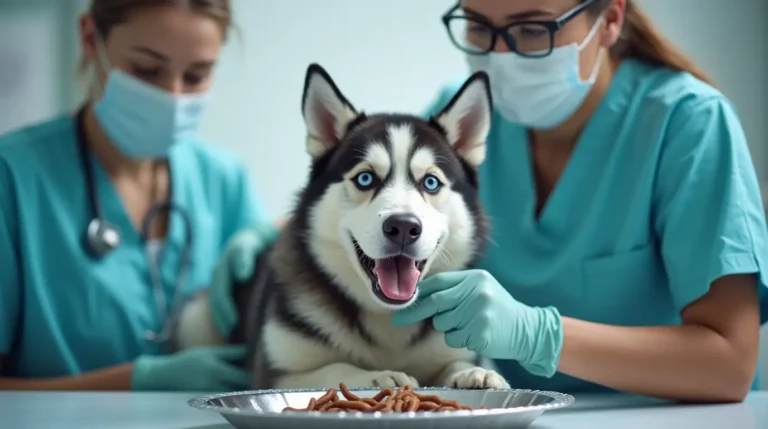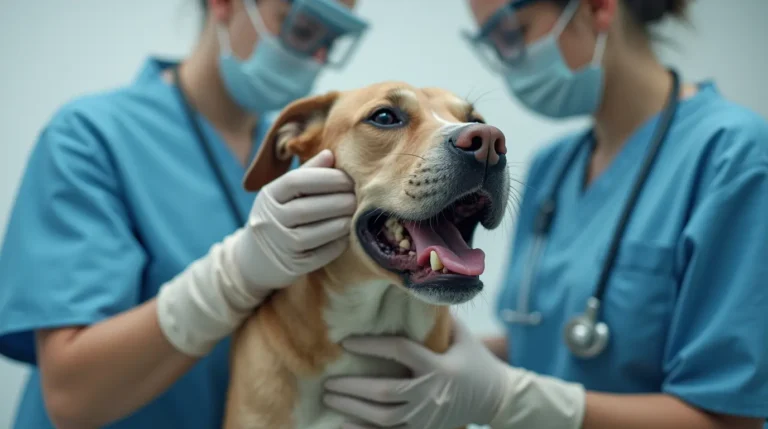Protect your furry friend from dangerous household toxins. Learn about 6 critical dog poisoning risks and essential safety tips to keep your pet healthy and safe.

Table of Contents
Every year, thousands of dogs fall victim to accidental poisoning within their own homes. As pet owners, we often overlook everyday items that can pose serious health risks to our beloved canine companions. Dog poisoning is a critical concern that demands immediate attention and proactive prevention.
This comprehensive guide will walk you through the most common household toxins that can harm your dog, providing expert insights, prevention strategies, and critical information that could potentially save your pet’s life. From kitchen ingredients to seemingly harmless household products, you’ll learn how to create a safer environment for your four-legged family member.
Understanding Dog Poisoning: A Critical Overview
What is Dog Poisoning?
Dog poisoning occurs when a canine ingests substances that are toxic to their biological system. These toxins can cause a range of health issues, from mild symptoms to life-threatening conditions. The severity depends on the type of substance, quantity consumed, and the dog’s size, age, and overall health.
Why Prevention Matters
- Veterinary emergency treatments for poisoning can cost between $500 to $5,000
- Some toxins can cause permanent organ damage
- Quick recognition and intervention are crucial for survival
The 6 Most Common Household Toxins for Dogs
1. Human Medications
Types of Dangerous Medications
- Pain relievers (Ibuprofen, Acetaminophen)
- Antidepressants
- Blood pressure medications
- Hormone treatments
Potential Consequences
| Medication Type | Potential Health Impact |
| NSAIDs | Kidney failure, stomach ulcers |
| Antidepressants | Neurological issues, seizures |
| Blood Pressure Meds | Heart rate and blood pressure disruption |
Prevention Tips:
- Store all medications in closed cabinets
- Never leave pill bottles or blister packs within dog’s reach
- Avoid administering human medications without veterinary guidance
2. Toxic Foods
Most Dangerous Food Items
- Chocolate
- Grapes and raisins
- Onions and garlic
- Xylitol (artificial sweetener)
- Macadamia nuts
Toxicity Levels:
- Chocolate: Severity depends on cocoa content and dog’s size
- Grapes: Can cause acute kidney failure
- Xylitol: Even small amounts can cause rapid insulin drop and liver failure
3. Cleaning Products
High-Risk Cleaning Substances
- Bleach
- Ammonia-based cleaners
- Toilet bowl cleaners
- Laundry detergents
- Floor cleaners
Safety Recommendations:
- Store cleaning products in high, locked cabinets
- Use pet-friendly cleaning alternatives
- Rinse surfaces thoroughly after cleaning
- Keep dogs away during and after cleaning
4. Household Plants
Toxic Plants for Dogs
- Lilies
- Azaleas
- Sago Palm
- Tulip bulbs
- Oleander
Plant Toxicity Symptoms:
- Vomiting
- Diarrhea
- Difficulty breathing
- Cardiac issues
- Potential organ failure
5. Pesticides and Rodenticides
Dangerous Chemical Categories
- Rat poison
- Insecticides
- Slug and snail bait
- Lawn and garden chemicals
Critical Warning: Rodenticides can cause fatal internal bleeding in dogs, even in small quantities.
6. Personal Care Products
Risky Substances
- Sunscreen
- Hand sanitizers
- Essential oils
- Makeup
- Hair products
Potential Health Risks:
- Chemical burns
- Digestive tract damage
- Respiratory issues
- Neurological complications
Recognizing Poisoning Symptoms
Immediate Warning Signs
- Excessive drooling
- Sudden vomiting
- Lethargy
- Seizures
- Difficulty breathing
- Unusual behavioral changes
What to Do in Case of Poisoning
Emergency Steps
- Remove the toxic substance immediately
- Call your veterinarian
- Contact the ASPCA Animal Poison Control Center (888-426-4435)
- Do NOT induce vomiting without professional guidance
- Collect toxin sample for veterinary analysis
Recommended Pet Products on Amazon
- Pet-Proof Medicine Lock Box
- Pet Safety Cabinet Locks
- Pet-Safe Cleaning Solution Kit
- Veterinary First Aid Kit
Dog Poisoning (FAQ)
Q: How quickly can dog poisoning symptoms appear? A: Symptoms can manifest within 30 minutes to several hours, depending on the toxin.
Q: Are some dog breeds more susceptible to poisoning? A: While all dogs are at risk, smaller breeds and puppies are typically more vulnerable.
Q: Can I use hydrogen peroxide to induce vomiting? A: Only under direct veterinary guidance. Improper use can cause additional harm.
Conclusion
Protecting your dog from household toxins requires awareness, preparation, and proactive management. By understanding these common risks and implementing preventive strategies, you can create a safer environment for your furry companion.
Call to Action: Share your pet safety experiences in the comments below! Have you encountered a potential toxin? Your story might help another pet owner save their dog’s life.
Explore More: Visit BlithePet.com for expert pet care guides and comprehensive safety recommendations.





